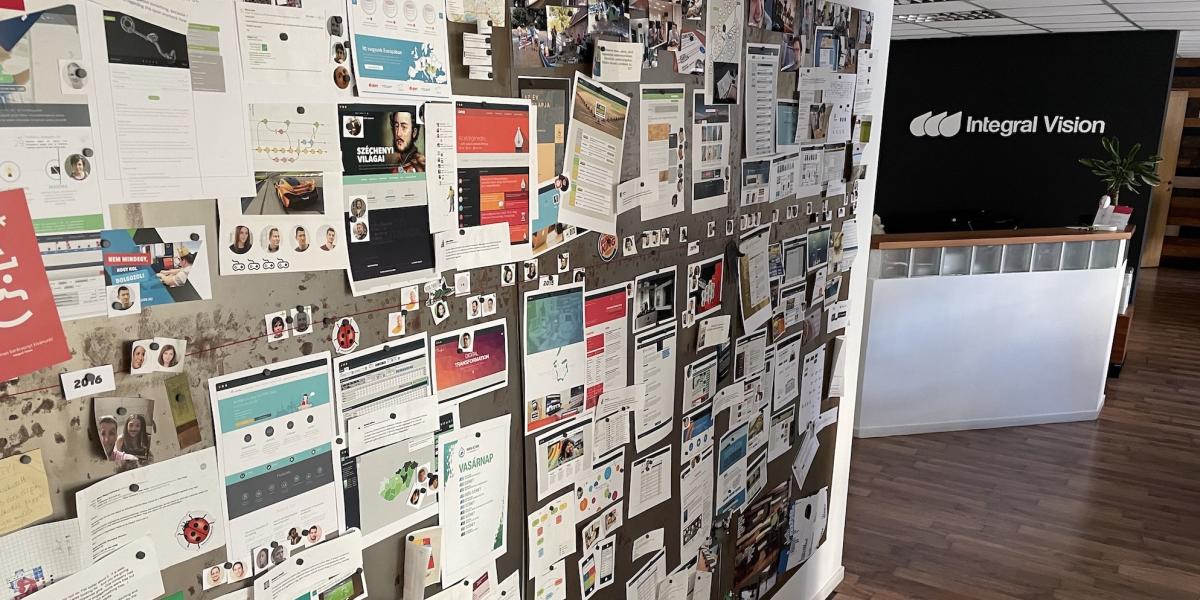When Integral Vision was founded, if someone had asked me if we would still be a Drupal vendor in ten years, I wouldn't have been able to answer the question.
Integral Vision
It's exactly twenty years since Dries published the first version of Drupal. Seven years later, in 2008, it was in Szeged, Hungary, that I left the big enterprise for an open-source platform. We were writing 4.7 then; now 9.x is the major version; Drupal has undergone several radical changes during this period. In this article, I outline what this has meant for our company.
Drupal as an enterprise framework
Fifteen years ago, Drupal was positioning itself as a website CMS. Along with Joomla and WordPress, it was one of the best-known PHP-based content management systems.
The community quickly broke away from the initial website builder mentality, but the real breakthrough came when Dries founded Acquia with a $7 million investment. Until then, the core contributors responsible for Drupal's development mainly were rock stars in the community, working day and night and their breadwinning jobs because they loved what they did. As business interest began to have a more serious impact on the community, so did the tie-faced individuals motivated to make a profit in the corporate sector using Drupal.
There was a lot of criticism of Dries for this move, with people worried that the profit motive would dampen the community's momentum. Open source at the time was tantamount to rebellion. Drupal was made what it was by the well-organized community behind it, so it was an audacious move by the founder to defy the whims of the time.
The change was a good thing for us. We started Integral Vision in 2009 to deliver complex, integrated solutions at a higher level and at a lower cost than the JAVA or .NET-based frameworks could do.
We have been in constant collaboration with Navitasoft (then known as IP Systems), seeing the quality assurance processes involved in JAVA development and adapting as many processes as possible to our PHP environment. We were among the first in our country to be able to deliver high-quality, complex Drupal solutions. Many of our developments have been fed back to the community; we have actively contributed to the development of Drupal. Around this time, my blog post About Drupal for Psychologists was born.
Version seven had become a mature system on which complex business solutions could be built, but now it can be said that it had reached its limits; it was necessary to fundamentally rethink the system, a much more robust, object-oriented approach, more modular and at the same time more transparent core was needed. After much research, the core team decided to do a complete rewrite by building on top of Symfony. Again, this was a radical and brave decision, which at the time drove many away from Drupal. The community may have seemed to have sacrificed the improvements of the past decade, and it was hard not to experience this as a loss.
New momentum
When Integral Vision was founded, if someone had asked me if we would still be Drupal vendors in ten years, I would not have been able to answer the question. I saw that the technology was evolving at an increasingly frantic pace, and while there may be great promise in this open-source community, there is no telling whether it will be able to meet the challenges of the times. There have been some low points when the idea of change has come up, but we have persevered. The switch from D7 to D8, for example, was one such period when many domestic companies chose Laravel. Some well-known Hungarian Drupal developers also switched to this system, which was no small blow to the local community. We perceived that finding Drupal developers were getting harder and harder, and we might lose our competitive advantage in the long run.
We started to look at Symfony and Laravel, but no one ultimately led the charge to implement either system. The company had several developers with 5+ years of experience who quickly got used to the platform and used it effectively.
After a few months had passed, and after the HBO outing, we recalled Vince to be the IV development lead. He was full of verve and new ideas. Despite a full year of developing in other systems, it never occurred to him that we should replace Drupal. Instead, we went headless. We treat Drupal as a data source and build a front-end application for it using independent technologies.
Mobile-first fever
A few years ago, the challenge was how to develop responsive applications optimized for mobile devices with good efficiency. Everybody was talking about the end of the PC era, the era of digital devices, and the need to create optimized displays for all kinds of screens.
Visit statistics showed that mobile devices are slowly overtaking traditional computers. Mobile-first design has become the flagship, and mobile apps have seen an unprecedented proliferation.
We also encouraged clients who came to us to think beyond a computer-based website. For example, for the Hungarian National Museum, we developed a back-end editorial system that could serve both the official website and a kiosk in the visitor space. We created a content management interface that could feed content to multiple frontend solutions optimized for the device. The system developed for the Consumer Protection Authority served both their official website and three mobile applications (win, iOS, Android). For the apps, the backend system was provided by Drupal, saving the client a significant amount of money: they didn't have to develop the backend system three times, and content management could be kept within one system. All this happened more than five years ago.
The introduction of "single-source, multi-device publishing" (single-source publishing) can provide a significant competitive advantage for larger organizations, and Drupal can offer an excellent backend for achieving this.
Digital Experience era
During the "mobile revolution" era, many independently operating web and mobile applications emerged within institutions, and remote operation and maintenance are often a significant problem.
Drupal has now grown into a very mature integration platform. Using it, we can extract data stored in the same database in various formats and structures. It supports all the major integration standards, allowing us to bring institutional systems together.
I don't know of another editorial system that is flexible, versatile, quickly deployable, and can serve as a control panel for dozens of applications.
Browsing the web has become a complex virtual experience with many intertwined services. Thinking about a web page has become less relevant, and we can now talk more about a user experience created by an interconnected network of web pages. We have moved from the Mobile Web paradigm to the Digital Experience era in the last two or three years.
In the age of big data, connecting disparate online services has become a key issue. The optimal user experience can be achieved by integrating various systems.
As at the dawn of any era, the more significant challenge now is to spot these opportunities. In larger institutions, organizational structure, shared responsibilities and fragmented budget logic also make it challenging to achieve integrations between systems that operate independently of each other.
What's next for Drupal?
At last year's DrupalCon Europe 2020 online conference, Dries gave an inspiring talk on the last twenty years of Drupal. According to the founder, Drupal has been able to remain successful over the past 20 years because innovation and user experience have been a priority throughout.
While the founder didn't highlight it this time, I'm convinced that, more importantly, the community has always been the number one priority. While it is still challenging to engage passive users today, Drupal has retained its free nature.
I think the ideal moment in the transition to D8 would have been to create a module marketplace by restructuring the licensing of the product. This would have allowed it to raise funds to finance development, as it does for many other open-source systems for business use.
Dries and the core community have stuck to the original principles despite many difficulties, and this is the most extensive guarantee that Drupal has a long future ahead of it.
Related link:
Share with your friends!


